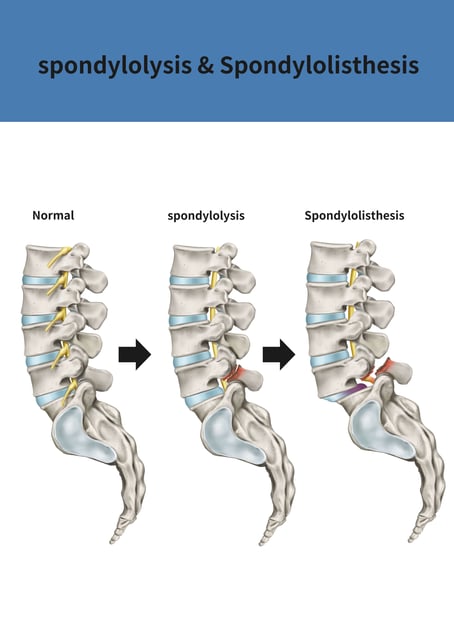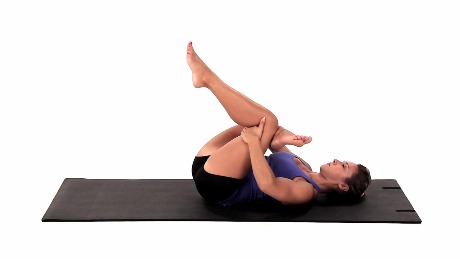What Is Spondylolisthesis, And How Can Physical Therapy Help?

Licensed Physical Therapist, PT, DPT // OCS Orthopedic Certified Specialist // Certified Dry Needling Specialist // EW Motion Therapy Homewood
If you are outside the medical field and have never seen the word spondylolisthesis before, you may think it is just an alternate pronunciation of supercalifragilisticexpialidocious. But, as your doctor would tell you if you received this diagnosis, it is instability in your spine, probably created from a stress fracture. One of your vertebrae has moved from its original place and might be causing you some pain. So what happens now? Can it heal on its own? Do you need surgery for it, or can it slip back into place?
While most spondylolisthesis patients do not need surgery, you may require some therapy to help restore your movement. Our physical therapists at EW Motion Therapy teach our patients how to strengthen the areas around the spine to promote pain-free movement and stability. Even if you choose to seek therapy elsewhere, we still want to advise on how to help the condition’s symptoms.
This article discusses spondylolisthesis and related conditions, how the condition can affect your movement patterns, and how physical therapy can help. With this information, you can start treatment with the confidence and knowledge to progress as best you can.
What are spondylosis and spondylolysis?
Along with spondylolisthesis comes two sister conditions: spondylosis and spondylolysis. They occur on a sliding scale, from mild to severe, beginning with spondylosis.
Spondylosis is normal degeneration of the spine as you age - many older people experience changes in their spine as they age, so it is not something to be overly concerned about. If, however, you develop weaker points in the joints of your vertebrae, you may have spondylolysis. While it is great to catch and treat it at this stage, many people do not seek out treatment until their condition finally reaches spondylolisthesis and their vertebra shifts out of place and becomes unstable. Again, surgery is not always necessary to correct the condition.
These names can get complicated, so for clarity, I will primarily be discussing spondylolisthesis for the rest of this article. There are many different types of spondylolisthesis, and it is important to see your doctor to rule out possible causes.
How does the condition affect movement?
Spondylolisthesis can have different effects on different age groups and body types. For example, someone who is young and very flexible (hypermobile) can incur the condition from overextension, like a gymnast who does one too many front handsprings. The condition can make prolonged standing more difficult for older adults, and it can even present as a congenital condition in young children. For the most part, spondylolisthesis causes back pain, which sometimes radiates into your legs and can cause nerve irritation. This can make walking, running, and any other activity more difficult, and if you let it progress for too long without seeking treatment, you may need surgery.
How can physical therapy help?
If you go to physical therapy for your spondylolisthesis, they can use their background as movement experts to address both mobility and strength. By working on hip and pelvic mobility and helping you build strength in your core and back, they can develop a series of exercises for you to continue to heal outside of the clinic. Here’s a list of some activities our therapists have assigned for their spondylolisthesis patients. If you want to try any of these out yourself, do it safely, and make sure you get permission from your doctor to do so.
Supine Posterior Pelvic Tilt: Begin by lying on your back with your knees bent and feet resting on the floor. Slowly bend your low back, tilt your pelvis back into the floor, then return to the starting position and repeat. Make sure only to move your pelvis and low back and keep the rest of your body relaxed.
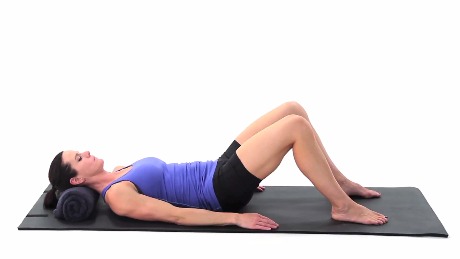
Supine Transversus Abdominis Bracing - Hands on Stomach: Begin lying on your back with your knees bent, feet resting on the floor, and your fingers resting on your stomach just above your hip bones. Tighten your abdominals, pulling your navel in toward your spine and up. You should feel your muscles contract under your fingers. Hold this position, then relax and repeat. Keep your back flat against the floor, and do not hold your breath as you tighten your muscles.
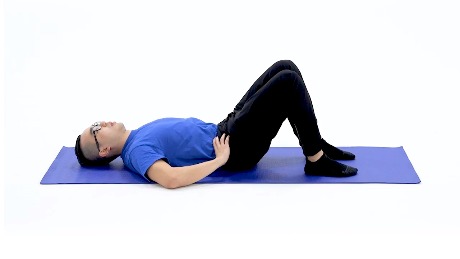
Supine Single Knee to Chest Stretch: Begin lying on your back with your legs straight. Using your hands, slowly pull one knee toward your chest until you feel a gentle stretch in your lower back. Make sure to keep your back relaxed and flat on the ground during the stretch.
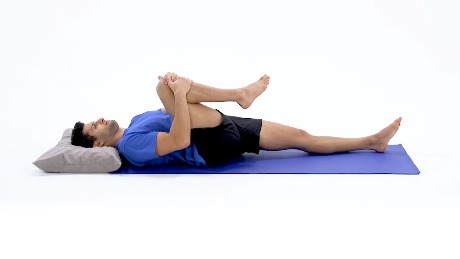
Supine Piriformis Stretch: Begin lying on your back with one leg bent and your other ankle resting on your knee. Grab underneath one leg, pushing your elbow into the lower thigh of the opposite leg. Gently pull your leg toward your body until you feel a stretch in your buttock and hold. Make sure to keep your low back flat against the floor during the stretch.
How else can I promote spinal health?
Now you know more about spondylolisthesis and some ways you can treat it. When you think of spinal alignment, you may think more of chiropractors than physical therapists. It might be a good idea to compare the professionals so you can choose the one that best fits your needs and helps you feel better.
We encourage our spondylolisthesis patients at EW Motion Therapy that the condition may sound scary, but you should be able to get moving pain-free once again with the proper treatment. If you are interested in physical therapy with us, fill out the Request an Appointment form on our website, and someone from our staff will contact you within 48 hours with your next steps.


